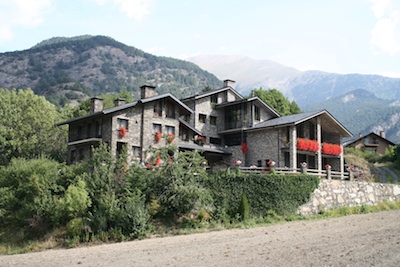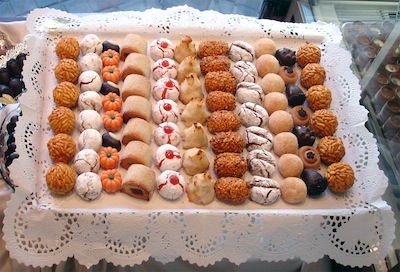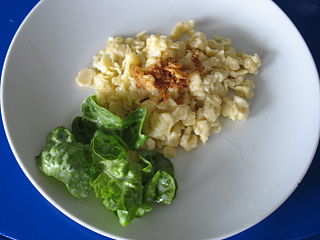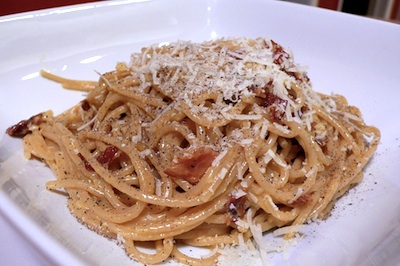In the last installment of A Taste of Europe, we travelled to San Marino, Monaco and Luxembourg. Now, we finish our gourmet exploration of Europe’s ministates in Andorra, the Vatican City, Liechtenstein and Malta, bringing you some unfamiliar meats and some delicious pastries…
Small country, big cuisine: Part two

Andorra, the largest of all the European ministates, is, uniquely worldwide, governed by two foreigners: the President of France and the Bishop of Urgell, in Spain. As 80% of the Andorran GDP comes from the tourist sector, one can guess there must be something good to eat there!
Andorran culture is part of the Catalan culture which stretches across Northern Spain and Southern France. The cuisine to be found there is typically Mediterranean, focussing on vegetables, fish, meat, olive oil and wine. In the mountain regions of Andorra, the main source of meat is lamb and pork. Typical Andorran dishes are xai, deliciously roasted lamb, or cunillo, a rabbit dish with tomato sauce. Local river trout is fried and covered with ham, and oven-roasted kid with nuts is a much-enjoyed meal. Quite a variety compared to endless chicken consumption, isn’t it? If you want to broaden your meat taste, you will find a recipe below.

It would be a shame to write about Catalan cuisine without mentioning their famous sweet dishes that make Catalonia a heaven for all of us with a sweet tooth. The signature dessert is of course the wonderful crema catalana, a custard made of egg yolks, milk and sugar, that can either be used for stuffing pastry, be served with fruit or like crème brûlée topped with a little caramel. Neulas are thin rolled waffles that are served at Christmas and dipped in Champagne, and mel i mató, fresh cow’s or goat’s cheese topped with honey is a wonderfully fresh treat on summer days.
Vatican City
From the Bishop of Urgell, our next stop is the domain of the most famous bishop in the world, the Bishop of Rome aka the Pope. As head of state of the sovereign Vatican City, he has only around 800 citizens, but as head of the Church, he leads 1 billion Roman-Catholics worldwide. As the Vatican covered historically many parts of Italy, traditional Vatican cuisine is Italian and traditional Italian cuisine is Vatican.

All life at Vatican, from law to economy to art to politics, is affected by religion and the clergy, so it’s no surprise that culinary traditions throughout the year are influenced by Catholic traditions. Roast lamb is eaten at Easter, whereas many people restrict themselves concerning meat or alcohol during Lent. Secular Roman and Vatican cuisine however has been very elaborate for centuries and the popes often supported culinary artists by employing them on their kitchen staff. For example, the famous Renaissance chef Bartolomeo Scappi, who lived in the 16th century and worked for Pius IV and Pius V, published an opus magnum cookbook, describing culinary inventions like the fork or foie gras. Still living up to that heritage, Roman cuisine has a lot to offer: pasta, pizza or more extraordinary dishes with pig’s trotters, animal genitals and bowels. One of the most traditional dishes is Coda alla vaccinara, oxtail butchers style, a stew made with ox- or vealtail, celery, carrots and herbs. The most popular pasta sauce is Carbonara sauce, which is made of cheese, bacon, eggs and pepper. You will find a recipe for this below.
Liechtenstein
Situated in the Alps, the next European ministate we explore is beautiful little Liechtenstein. Headed by the Prince of Liechtenstein, the country has been independent since the end of Napoleon Wars in 1806 and has since progressed to become one of the most prosperous states worldwide. Liechtenstein’s culture and cuisine shows many similarities to other Southern German-speaking areas, such as Austria, Switzerland, Bavaria and Baden-Wurttemberg. We all love good and hearty dishes that need sometimes a little elaboration (proud Bavarian author writing…).

One of Liechtenstein’s favourite national dishes is Käsknöpfle, boiled small lumps of dough made from flour and eggs, covered with melted cheese and fried onions. Liechtenstein is about as crazy about good bread as the Germans: Alex Hoepker, who was born in Liechtenstein but has lived in America for many years, says, “Despite the enormous variety of breads and pastries you find in American stores, I still get homesick for a good loaf of bread with that crunchy crust and flavourful interior, whose wonderful waft combines with fresh butter and an assortment of cheeses – that is a meal for any time of day.” If you want something to drink with your bread, Liechtenstein has also developed a red wine tradition and produces a significant amount of wine per year, the most famous coming from the Vaduz area. And finally, one thing I’d like to try one day would be Riebel, a roasted mash made from a special aromatic corn that may only be grown in special areas in Switzerland and Liechtenstein. I’m getting hungry, so lets hurry on to our last stop.
Malta
The final European mini-state to discover is the beautiful island of Malta. Situated in the Mediterranean Sea, its cuisine has been influenced by occupying forces over the centuries, such as Spain, France and Great Britain. Still, the Maltese managed to develop and keep a national culinary identity.

One of the most traditional foods is fenkata, rabbit served fried or stewed. Eating rabbits has been a small resistance against foreign occupation during the time of the Knights of St. John (1302-1798), who restricted hunting rights on the island. It has therefore been quite important for Maltese identity and national consciousness. Formerly a take-away dish for workers, the hobz biz-zejt is a delicious simple snack made of bread dipped in olive oil and topped with tomato pulp. But Mediterranean cuisine wouldn’t be complete without a good fish dish, and the Maltese have aljotta, a Bouillabaisse-style soup made of fish broth, tomatoes, garlic and herbs.
We asked a Maltese friend of E&M, John Paul, to tell us his favourite delicacy, and he picked Malta’s popular streetfood, pastizzi: “This is definitely big hit on the Maltese islands. It’s a roughly diamond-shaped flaky puff pastry filled with hot ricotta cheese or a mashed pea filling. They are calorie bombs, granted, but they are definitely worth trying once in a while… especially over tea on a breezy afternoon in the shade. When living abroad we Maltese tend to meet up once in a while and inevitably the conversation turns to what food we miss, and Pastizzi always get a mouth-watering mention!”
Recipes
Maltese imqaret
The representative Maltese pastry dish chosen for the Café Europe event that was held in 2006 was Imqaret, a small deep-fried pastry filled with dates.
You will need:
200 g margarine, 650 g white flour, 100 g sugar, 1 egg, 1 tsp bicarbonate of soda, 400 g pitted dates, chopped, 3 tbsp aniseed liqueur, 2 tbsp orange juice
Mix flour and bicarbonate of soda well. Add margarine and sugar and blend until it looks like crumbs. Mix with the egg and let it sit for an hour.
For the filling, gently heat dates, liqueur and orange juice in a small saucepan, and stir well until the mixture looks creamy. Remove from heat and leave to cool.
Meanwhile, roll out the dough on a floured surface so that you have a strip of about 10 cm width. Spread the date mixture along the middle of the dough stripe and fold the pastry over, closing it by moistening and pressing the edges. Afterwards, cut the pastry diagonally, to make diamond shapes. Deep-fry the pieces until golden and wipe off the excess oil. Serve hot and enjoy!
Andorran oven-roasted kid with nuts
You will need:
4 shoulders or 2 thighs of kid, 50 g toasted almonds, 30 g pine nuts, 4 cloves garlic, 3 bay leaves, 1 glass white wine, ½ litre stock, 1 teaspoon flour, olive oil, black pepper, salt
Place the kid in a baking tray and season it with salt, pepper, the bay leaves and a splash of olive oil. Cook it in the oven for about 20 minutes at approximately 160ºC, moistening it from time to time with the white wine.
Finely chop and mix the pine nuts, toasted almonds, cloves of garlic, flour and stock; you may use a blender for this.
Spread the mixture over the kid and put it in the oven at 180ºC until the kid is golden.
Served with cooked potatoes, this makes a really hearty feel-good dinner.
Käsknöpfle from liechtenstein
You will need:
300 g flour, 3 eggs, a pinch of salt, one onion, sliced into rings, 100 g cheese, maybe Gruyère or an aromatic mountain cheese
Mix flour, eggs and salt and add 150 ml warm water. Stir well. Sieve through a sieve with big holes (you can buy special sieves for this in the German-speaking area) and boil in hot water, until the Knöpfle are on top of the water. Then take them out. Fry the onion rings until lightly browned in a pan, add cheese and onions to the Knöpfle in a bowl and stir a bit. Serve with a cold beer and relax!
Roman Carbonara sauce

To serve four, you will need:
300 g ham, diced, 5 egg yolks, from very fresh organic eggs, 100 gr freshly grated parmesan, 200ml cream, 2 tbsp oil, salt, pepper
First, cook pasta of your choice. Then fry the ham with oil in a pan. Meanwhile, blend cheese, cream and yolks well. Mix quickly with hot pasta and stir in the crispy ham. Do not heat up again (that’s why the eggs have to be so fresh), otherwise you will end up with scrambled egg and not a heavenly creamy sauce. Bon appetito!







